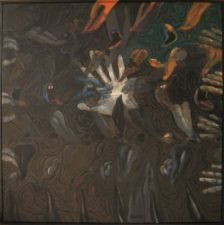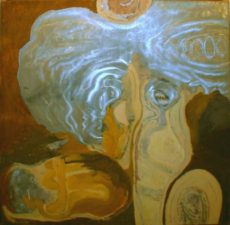The new NFT art market has many qualities that might make you assume that curation has its days counted. You could say this based on the fact that the NFT art scene is a decentralized affair in which you can go around many of the traditional gatekeepers in the industry. While, in a sense, this might be true, the reality is that the NFT art market poses different challenges that artists and collectors alike should be aware of. Challenges that an art curator is better equipped to face than an average member of the audience, a collector, or even an artist.
There is every indication that curators will shape the NFT art market, perhaps in no small way. These individuals have a variety of roles that people in the digital age find value in. After all, having too much information and all sorts of businesses, products, and NFT artists can give anyone a headache when buying artwork. Artists need an ally that advocates on their behalf to NFT art galleries and collectors, who take their time to understand their craft and vision to promote it. And those that sell artworks or charge fees for their viewing, like NFT art galleries or museums, need a curator to raise awareness about the technology and the artists to reach broader audiences. Finally, these professionals also advise collectors on how to navigate the industry.
What does an art curator do? Here are some of the many roles curators can take in the current NFT art market and foment its development.
Guides and developers of art
An art curator is not idly standing-by saying “This is good” and “That’s awful”. They are consistently looking for talent. Once they do, they work with these emerging artists to develop their careers and guide them through the NFT art market. They look to understand the artists’ vision and aesthetics, to write, talk, and generally advocate for the artists.
In short, curators can act as agents or managers for artists. Although they wouldn’t be regarded as such, because they can do much more than advocate for artists.
Advice for buyers
The digital age, before Web3, brought a surge of means to communicate and create and distribute content. This has produced a saturation of information and content, making it more difficult for buyers to find artwork they are interested in. Because curators comb the NFT art market to locate the best talents, they can advise buyers about which artists might appear to have promising careers or which might appeal best to the taste of a specific collector.
Indeed, by helping collectors sort art space, curators are shaping the NFT art market while providing real-life value to the different players in the industry.
Curation and events
If you have ever attended a curated exhibition, then you have witnessed one of the principal value propositions of art curators. These professionals have the task of selecting artwork from an artist or an aesthetic movement to tell a story to the audience.
A curated exhibition is a necessary feature of the NFT art market, as it is an event in which people with similar artistic tastes can connect. It is a more social setting and an ideal venue for artists to sell artwork.
Encouraging the adoption of NFTs and Web3
Digital artists have found it challenging to monetize their work in the previous paradigm of the Internet, Web 2.0. If one created art using computer technology and later saved it as a file (JPG or PNG), it would have been hard to ensure that people appreciate the artwork and don’t use it to gain money or an audience. You are solely in the realm of the legal system, which can take some time to enforce the rules in place. This reality should be promoted by curators more than the artists. As intermediaries in the space with taste-making ability, they are ideal individuals to convince people to join the blockchain and use it to buy or create art.
When you think of it this way, curators are tasked with growing and developing the NFT art market.
Making sure that new movements reach relevant audiences
Sometimes an artistic movement or aesthetic is created but does not get the visibility it deserves. The curator has to look everywhere for new forms of expression and artists. Once a curator finds such artworks, they must have sufficient knowledge to understand what is in front of them. Because sometimes you have something new, or even genius, it runs the risk of not being correctly appreciated.
If curators find innovative art, they must find a way to get people to view it.
You can find that people can be curators. But NFT art galleries can also engage in curation activities. For example, SOPRG is an NFT art gallery with an exhibition space in the Somnium Space metaverse, where auctions and events have been held. Art curation is no longer a means of gatekeeping in the art space. However, the NFT art market still needs it to develop and grow.
Painting by Mr. Ogoun – you can buy the NFTs via our shop.





